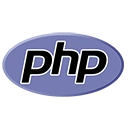PHP is a widely used server-side scripting language for web development. To start working with PHP, you need to set up a development environment on your local machine. This guide will walk you through the steps to install PHP on various operating systems.
1. Introduction
Let's begin by understanding the importance of having PHP on your local machine for web development.
2. Installing PHP on Windows
If you're using a Windows operating system, follow these steps to install PHP:
a. Download PHP
Visit the PHP official website and download the latest PHP version for Windows.
b. Install PHP
Run the installer and follow the installation wizard. Make sure to add PHP to your system's PATH for easy command-line access.
c. Verify Installation
Open a command prompt and run the following command to verify the PHP installation:
php -v
3. Installing PHP on macOS
If you're using macOS, you can install PHP using Homebrew, a popular package manager.
a. Install Homebrew
If you don't have Homebrew installed, open your terminal and run this command:
/bin/bash -c "$(curl -fsSL https://raw.githubusercontent.com/Homebrew/install/HEAD/install.sh)"
b. Install PHP
After installing Homebrew, run this command to install PHP:
brew install php
c. Verify Installation
Open a terminal and run the following command to verify the PHP installation:
php -v
4. Installing PHP on Linux
Installing PHP on Linux is typically done through the package manager for your distribution, such as APT, YUM, or Zypper.
a. Update Package Lists
Open your terminal and update the package lists:
sudo apt update (for Debian/Ubuntu)
sudo yum update (for Red Hat/CentOS)
b. Install PHP
Run the package manager to install PHP:
sudo apt install php (for Debian/Ubuntu)
sudo yum install php (for Red Hat/CentOS)
c. Verify Installation
Open a terminal and run the following command to verify the PHP installation:
php -v
5. Conclusion
Congratulations! You've successfully installed PHP on your local machine. Now, you can start coding and developing web applications using PHP. To become proficient, practice, experiment, and build real projects using PHP.
This tutorial provides a comprehensive overview of installing PHP on different operating systems. To further your PHP skills, explore advanced PHP topics and frameworks.

